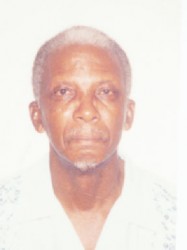Ten years on: Have we left the Secondary Schools Reform Project behind?
By Walter B Alexander, A.A.
During the conception of the Secondary School Reform Project (SSRP) in the early 1990s and during the life of the 1996-2004 Project, it was envisaged that initiatives undertaken in the twelve (12) Pilot Schools would be replicated throughout the secondary school system. Indeed the Mission Statement of SSRP spells it out in the words “The Ministry of Education through the SSRP seeks to Improve the Quality, Equity and Efficiency of Secondary Education in Guyana.” Moreover, the then Minister of Education, the late Dr. Dale Bisnauth, said in September 1997 that “the focus is to raise the levels of performance of weak schools, not to lower the performance of the better schools.” With the passage of time (ten years) since the closure of the Project and with the annual expenditure of billions of Guyana Dollars on education following Current and Capital Budgets, it is now apposite to take stock. And since we operate in an examination-oriented education system, the principal yardstick to be used is the Results of the CSEC (Carib-bean Secondary Educa-tion Certificate) Exami-nation.
However, since examination results must not be considered in a vacuum, it is necessary to adopt a holistic approach (as SSRP had advocated in Pilot Schools) and consider for individual schools the nature of the inputs, the processes in administering the school, and the outcomes in terms of student achievement. Firstly,the inputs to be considered are mainly the student intake and the resources, both human and material.
The issue that now arises is whether resources are allocated to a school in terms of matching the attainment of the students according to their NGSA (National Grade Six Assessment) scores with staff of the required competence and whether school facilities are in keeping with the needs of the students. In the scenario of limited resources, it is a huge difficulty to allocate more resources to those schools with greater needs. Because students are allocated to secondary schools on the basis of performance and also location of residence, it is not unusual to find a secondary school admitting the bulk of its students with scores of less than 400 marks. One wonders what is the expectation of the parent(s) of such students in those schools. Secondly, the processes to be followed in administering the school must be based on sound policies drawn up and implemented in order to maximize the use of available resources. Of course, there must be policies on matters like discipline, attendance, homework, curriculum delivery, assessment and reporting, parent involvement, among others. During the life of SSRP, deliberate steps were taken to ensure that good practices were adopted, documented and extended among Pilot Schools and some non-pilot schools. The question that now arises is whether such practices are still being followed.

It is useful at this juncture to explain how NGSA scores are to be interpreted, since there is wide misconception about how pupils have actually performed. Firstly, the Score on the Results Slip for each of the four subjects is a “Standardised Score” or a “Converted Score”. This year the maximum Total Score is 540, and the minimum Total Score is about 280. The maximum score corresponds to 240 as a “Raw Score”, and the minimum corresponds to a “Raw Score” of zero or 0. Secondly, if a pupil secures about 50% of the work right, s/he would obtain a Total Score of about 400. Thirdly, it is erroneous or misleading to calculate the Total Score as a percentage of the maximum 540. In other words, a score of, say, 510 (which is 94.4% of the maximum 540) does not mean that the pupil secured 94.4% of the work right. In fact, that score corresponds to about 80% of the work right. Similarly, a score of 400 (which is 74.1% of the maximum 540) does not mean that the pupil secured 74.1% of the work right. Indeed and in fact, a score of 400 shows that the pupil has obtained only about 40% of the work right. Hence, secondary schools which admit an abundance of students with scores in the low 400’s and less that 400 are enrolling students who are weak in Reading and in Basic Mathematics. If the issue of Equity (not sameness) is to be properly addressed, the ‘weak’ schools require disproportionally more resources, more support and closer supervision by the Departments of Education. This is what SSRP was doing. What is the evidence that this is nowhappening with, for example, secondary schools in South Georgetown and in Hinterland Regions?
During the life of SSRP the focus of the curriculum reform was the four core subjects in Forms I, II and III. Much success was achieved in the ten (10) Pilot Schools which were converted from Community High Schools and Primary ‘Tops’ to General Secondary Schools.These schools were converted, not baptized. The improvement in student performance was demonstrated in their improved scores in the National Third Form Examination, at least up to 2004. This improvement was due to a number of measures implemented by SSRP, including (a) individual textbooks for every student in the four core subjects, (b) the introduction of Reading as a time-tabled subject, (c) the establishment of a school library and the purchase of books, and (d) the construction of adequate laboratory science facilities. The improved teaching and learning facilities for science was accompanied by the production (in collaboration with GEAP – the Guyana Education Access Project) of “Science Practical Activities Guide”. By the end of the Project there was already concern whether the SSRP initiatives would be sustained.
Besides the focus on the Lower Secondary classes (Forms I to III), some attention was paid to the curriculum for the Upper Secondary classes (Forms IV and V). Schemes of Work for English, Mathematics, Social Studies and Science were prepared, as well as Curriculum Guides in the Technical/Vocational subjects. In addition, a Common Secondary Curriculum Model was designed, in which it was proposed that ‘weak’ students in these classes would offer a maximum of five (5) subjects –the four (4) core subjects and one (1) Tech/Voc subject. They were to be time-tabled for additional periods for the core subjects. In this way the offerings by students will be optimized, and their chances of more students matriculating would be maximized, even with passes at Grades III and IV. This plan was to increase the desire by more boys to complete secondary school, thereby reducing the number of drop-outs. But with the abandonment of several of the SSRP initiatives, many Pilot schools and Non-Pilot schools are not rising to the challenge of obtaining satisfactory CSEC results for the majority of their students. During the life of SSRP when there were about 80 Public secondary schools with approximately 6000 candidates for CSEC Examinations annually, the number of candidates securing passes (Grades I-III) in 5 or more subjects including English A and Mathematicswas about 600. The over-whelming majority were concentrated in about twelve (12) schools, the Sixth Form Schools and the better run Fifth Form Schools. Today (after conversion and new construction) we have nearly 100 Government General Secondary Schools which enter more than 10,000 candidates for CSEC. Therefore, we need to know more precisely how the Government Fifth Form Schools are performing at CSEC, especially in South Georgetown, rural areas, and in Hinterland Regions. We need the facts in order to know whether we are improving Quality and Equity.
Further work by SSRP in order to improve the quality of secondary education was related Target Setting in the Processes in school management. Since so many activities are quantifiable, it was advocated that targets could be set in individual schools for Attendance by teachers and students, and for Percentage passes in each subject in each class. It was shown that where Average Teacher Attendance was under 90% and Average Student Attendance was under 80%, a student would be receiving on the average less than 72% of the available curriculum. Hence, that student would not be in a position to complete the planned curriculum. However, for targets to be set and for attempts to be made to reach them, records must be faithfully kept and completed in a timely manner. Thereafter, there must be review at regular intervals to assess achievements and to renew the cycle. Of course, the ardour of record-keeping could be reduced by the use of modern technology – computers. And SSRP had put in place in all the Pilot Schools computers for use by school administration, and in Departments of Education for use by Education Officers. The question now is how far has the system been maintained, and has it been updated with the passage of time.
Now while Inputs, however limited, can be provided, and Processes are in place, the Output can still be deemed unsatisfactory, because the education system is inefficient. When this writer was a Lecturer of the course “Issues in Education” in the School of Education and Humanities of the University of Guyana, he used to teach that a plausible definition of “Effectiveness” was ‘getting the job done,’ while “Efficiency” meant ‘getting the job done in a timely manner.’ A major disappointment in the outcomes of SSRP is the inordinarily late publication of the Results of the National Third Form Examination (NTFE). This examination, first written in 2001, was designed to assess students’ attainment two years before they wrote the CSEC Examination, so that weaknesses can be addressed in Forms IV and V. Furthermore, it was expected that the Results would be available by the end of the July Term. Early feedback is crucial, as these are diagnostic tests. Yet, year after year, the results are not available until the middle of the September Term, or later.This helps to defeat the purpose of the examination, and causes some schools to ignore the examination or some components of the examination, like the projects (which carry 25% of the marks). Hence, it is herein suggested that the NTFE be written in schools as their Annual Examination in the four core subjects during Monday to Thursday of the penultimate week of the July Term. After all, the NTFE indicates the level of work that students should have reached by the end of Form Three in the core subjects. The scripts can then be marked by the same teachers of a school, using a centrally prepared Mark Scheme. In this way the results will be available for inclusion in their students’ Annual Reports for distribution last day of term, as per the Ministry’s Standard Operating Procedures.
Finally, in the article Legacies of SSRP written ten years ago in the SSRP Magazine “The Reformer”, this writer had predicted:
Quality, Equity and Efficiency are more apparent today (2015) in the secondary school system. SSRP must have delivered. Departments of Education must have “taken back their schools,” as advocated by a senior education officer. School administrators no longer embark upon their tasks lightly or ill-advisedly. Delivering education is now serious business. Schools are seen to be effective and efficient organisations, giving value for money and justifying their existence.
The final question now to be answered is: Are the ‘weak’ schools and the less prestigious schools getting their fair share of the pie (resources and attention), so that they can become more effective and efficient?
ehind?








